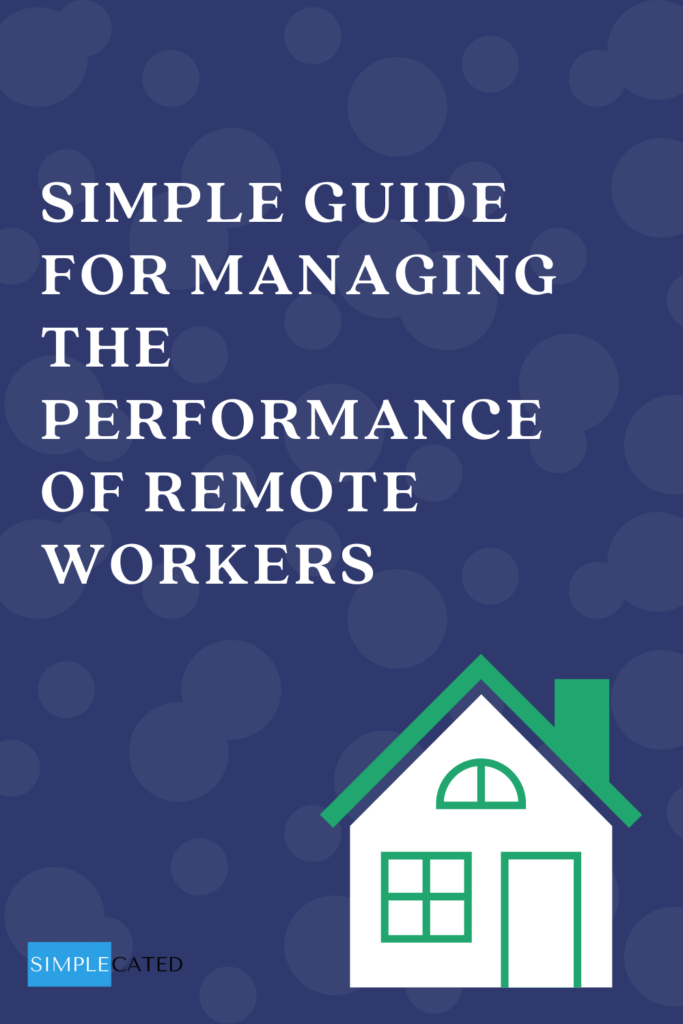Performance management is one of a manager’s most important responsibilities. It helps set the tone for your entire department. Recognizing your high performers while addressing your low performers keeps your employees motivated and moving in the right direction. It tells employees what you’ve determined is important, which indicates the direction in which you’re leading the team. Whether you manage performance effectively or ineffectively sends a big message to employees about the kind of leader you are.
Typically, managers see their employees regularly, so they do a lot of visual performance management. Is John always at his desk when you pass by? Does Sarah spend a lot of time in the break room? Is Alice always smiling and happy to be there? Is Richard always gloomy?
With so many employees working from home right now, managers are having to quickly learn how to manage performance without seeing their employees. Remote performance management can feel very different. After all, we used to see each other all the time. We knew who was at work and who wasn’t. We relied so much on what we saw, but how accurate was that anyway?
While what you see may indicate something needs to be looked into, it doesn’t tell the whole story. John could be working hard at his desk, or he could be shopping online. Sarah could be slacking off, or she could do her best creative thinking by walking around. Alice could look happy when she knows you’re around and then be snippy once you leave. Richard could be going through a divorce and doing his best.
In my last job, my boss worked in a different building than I did. I thought it would feel really weird – I’d always been just a few steps away from my bosses in the past. How would I get questions answered? How would she know if I was meeting expectations? But after a few weeks, it felt normal. Turns out, there were a lot of ways for us to stay connected, and we set aside regular times to meet either via phone or in-person.
A lot of companies have started using technology to essentially spy on their employees. As a manager, if you really have the time to review screenshots of your employees’ computers and the number of emails they’re sending, you’re basically showing that you don’t know how to be an effective manager. If you have managers reporting to you who want to do this, they don’t have enough work to do, and you should reconsider whether they should be managers. You’re paying them way too much money if this is what you’re getting in return. This leads to a culture of mistrust and lack of engagement. Effective leaders don’t babysit and control.
So, how can you do remote performance management effectively and still have time to get your own work done? It can seem overwhelming, but having the right foundation simplifies everything. Here are steps you can take today to make sure you’re effectively managing the performance of remote workers.
Remember why you hired your employees in the first place. You hired your employees to do a specific job, not so you could watch them do a specific job. You have your own job to do. You don’t need someone you can watch; you need someone who can do.
What roles do your employees have? What do you need them to do? The job description and performance goals can help with this. Once you understand the job they fulfill, it’s much easier to determine how to manage performance.
Determine how you’ll know they’re doing their job. Some tasks have productivity metrics that go along with them, and that can be a great way to manage performance fairly and consistently.
A lot of jobs don’t have productivity metrics, however, and those can be a little more tricky. Think about the role you hired them for. What outcomes or achievements demonstrate meeting expectations? Think about how you managed performance in the past when everyone was onsite but you weren’t there. I’m sure there were days you didn’t see each employee much less watch them work. Maybe you had back-to-back meetings or were on vacation. How did you make sure your team was moving in the right direction?
Remember that, in the current environment with working parents caring for children and all employees dealing with the stress of the pandemic, you may need to revise your expectations to make sure they’re reasonable. Treat your employees well.
Communicate, communicate, communicate. Effectively managing performance in any setting requires communication. A dynamic like we’re in now with so much change and uncertainty requires that much more communication. Make sure your employees understand what’s expected of them.
Have regular check-ins with your employees. Even if they work very independently, check in with them at least every 1-2 work days. Ask them how they’re doing, check on the status of projects, outline the upcoming tasks, and find out what they need from you. Rounding with your employees takes only a few minutes and is a very effective way to keep your remote employees engaged and make sure everyone is moving in the right direction.
Continually provide feedback to your employees on what they’re doing well and anything you need them to adjust. Your employees should always know where they stand with you and whether they’re meeting your expectations. With many employees working remotely for the first time and juggling so many things, they may need extra reassurance from you. Take the time to encourage them and guide them in the right direction. As always, if someone comes to you with a complaint about one your employees, ask what happened before accusing.
Treat them like adults. Trust your employees to do their jobs. Given you’ve now determined how you’ll know jobs are being done and you’re communicating regularly with your employees, you can give them the room to do their jobs. Employees who always have to prove themselves can end up spending more time defending themselves than actually doing their jobs. Allow your employees to do what you’ve hired them to do. Employees who feel trusted and enabled to do their jobs are more likely to actually do a good job.
As you’re remaining engaged with your employees, you’ll easily find out if anyone isn’t meeting expectations. If that happens, address it quickly and consistently. Quickly addressing issues with performance or not following directions can typically help employees get back on track. If issues persist, you’ll continue addressing them consistently according to your policies.
Bottom line – managing the performance of remote workers isn’t as different as it may seem. Implement these habits of clear expectations, regular communication, trust, and accountability, and you’ll simplify your responsibility of managing workers remotely. Plus, these habits are beneficial when everyone is together too, so regardless of whether your team remains remote or goes back onsite, you’ll be ready!
Photo credit: By mail272 / Canva





